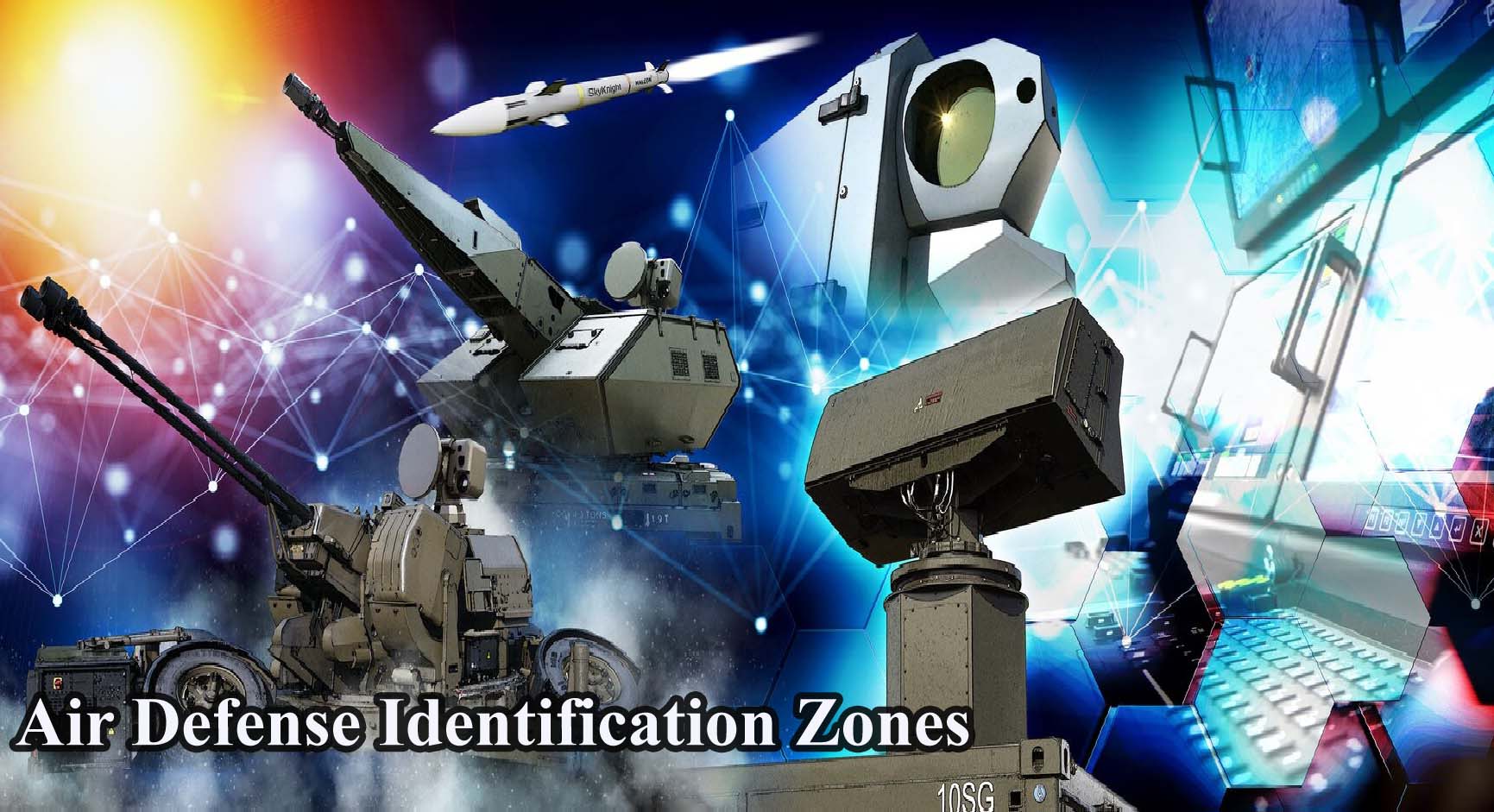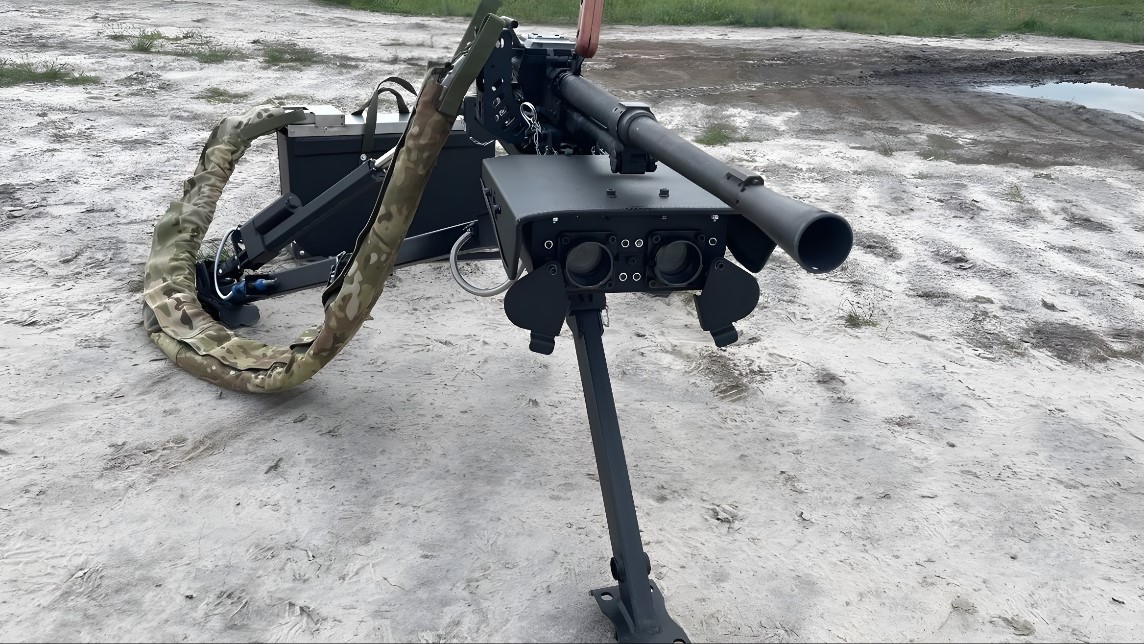What is Air Defense Identification Zone ? It's Works , Failure Incidents ,More

Technology News
World
What is Air Defense Identification Zones (ADIZ) or Air Defense Identification System ?
An Air Defense Identification Zone (ADIZ) serves as a designated area in the sky where a country holds control over incoming aircraft for national security purposes. This zone acts as a buffer extending beyond a nation's territorial borders, ensuring the safety of its airspace. Here's a simple breakdown of what an ADIZ does:
Purpose:
1. Identification: Countries aim to swiftly identify any aircraft entering the ADIZ, regardless of whether they are civilian or military. This allows them to assess potential threats and safeguard their airspace.
2. Location: Knowing the whereabouts of all aircraft within the ADIZ is crucial for maintaining situational awareness. This knowledge enables a faster response if needed.
3. Control: Countries have the authority to impose restrictions on certain types of aircraft or mandate specific procedures for those flying within the ADIZ.
Key Points:
1. Not International Law: The concept of ADIZ isn't formally outlined in any international treaty and lacks universal recognition.
2. Early Warning System: An ADIZ acts as an early warning system, alerting authorities to potential threats approaching a country's airspace.
3. Procedures for Civilian Aircraft: Civilian airlines typically file flight plans that include entering an ADIZ. Additionally, they may need to communicate with air traffic control or military authorities.
4. Military Response: In cases where an unidentified aircraft fails to follow prescribed procedures, military jets may be deployed to visually identify it and potentially escort it out of the zone.
Example: North American ADIZ
One well-known example is the North American Air Defense Identification Zone (NAADIZ), which is jointly managed by the United States and Canada. It covers the airspace surrounding both countries and plays a vital role in maintaining air defense readiness.
an ADIZ serves as a proactive measure to safeguard national airspace, ensuring swift identification and response to potential threats.
How Air Defense Identification Zones Work ?
Air Defense Identification Zones (ADIZ) are crucial components of a nation's airspace security strategy. They function as early warning systems, deterring unauthorized flights, and ensuring orderly air traffic within a designated area.
The Players Involved:
1. Military: The air force plays a critical role in monitoring and enforcing the ADIZ. They use ground-based radar stations to scan the airspace continuously for any flying objects, including aircraft, missiles, or drones.
2. Air Traffic Control (ATC): Civilian ATC coordinates with airlines to ensure flight plans are filed properly, including notifying authorities about entering the ADIZ.
3. Civil Aviation Authorities: These authorities establish regulations and procedures for civilian aircraft operating within the ADIZ, including communication protocols and identification procedures.
The Process:
1. Continuous Monitoring: Military radars scan the ADIZ for any flying objects, gathering information like position, altitude, speed, and direction.
2. Identification: Aircraft are identified through filed flight plans, transponder data, or communication attempts.
3. Evaluation: Authorities assess the potential threat level based on gathered information.
4. Response: If an unidentified aircraft doesn't follow procedures, increased scrutiny, scrambling of jets, or escorting may occur.
Importance of ADIZ:
1. Early Warning: ADIZ provides valuable time for a country to react to potential threats approaching its airspace.
2. Deterrence: The presence of an ADIZ discourages unauthorized flights, enhancing national security.
3. Maintaining Order: ADIZ procedures manage air traffic and prioritize national security concerns.
Limitations:
1. International Recognition: ADIZ isn't universally recognized, leading to occasional tensions when other countries disregard it.
2. Enforcement Challenges: The vastness of an ADIZ can make monitoring difficult, and distinguishing between civilian and military aircraft can pose challenges.
Overall, ADIZ plays a significant role in safeguarding a country's airspace, ensuring early detection of threats, deterring unauthorized flights, and maintaining order within a designated area.
World's First Air Defense Identification Zone
During the height of the Cold War in December 1950, the United States took a significant step in bolstering its air defense capabilities by establishing the world's first Air Defense Identification Zone (ADIZ). This move came shortly after President Harry S. Truman declared a national emergency amidst the Korean War.
The Cold War era was marked by heightened tensions, particularly concerning potential air attacks from adversaries like the Soviet Union. With the emergence of radar technology, there was a pressing need to distinguish between friendly and hostile aircraft. However, the existing radar systems were not advanced enough to provide definitive identification.
To address this gap, the United States implemented the ADIZ concept. By delineating a buffer zone around its airspace, the ADIZ provided crucial additional time to identify incoming aircraft before they entered US airspace. This was particularly important given the evolving nature of aerial threats during the Korean War.
The establishment of ADIZ around North America served as a deterrent against potential attacks and ensured a timely response to any approaching aircraft. While not universally recognized by international law, ADIZ has since become a widely adopted practice by many countries seeking to safeguard their airspace.
In essence, the creation of ADIZ represented a pragmatic response to the challenges posed by Cold War tensions and the evolving nature of aerial warfare. It underscored the importance of early warning systems and the need for proactive measures to protect national airspace.
Limitations of Air Defense Identification Systems: Real-World Incidents Highlight Concerns
Air Defense Identification Zones (ADIZ) play a pivotal role in safeguarding airspace globally. However, recent events underscore the system's vulnerabilities and the need for improvements.
1. Korean Air Lines Flight 007 (1983): This incident exposed a major flaw in ADIZ procedures. A commercial South Korean passenger plane strayed into Soviet airspace after a navigational error. Despite warnings from the US ADIZ system, the Soviets failed to properly identify the civilian aircraft and tragically shot it down, resulting in the loss of 269 lives.
2. China's East China Sea ADIZ (2013): China's declaration of an ADIZ in the East China Sea created friction with neighboring countries like Japan and South Korea. These countries argued it was an infringement on their airspace and challenged China's authority to enforce it. The incident highlighted the potential for political tensions to arise from overlapping ADIZ claims.
3. Malaysia Airlines Flight 370 (2014): This mysterious disappearance of a Malaysian passenger plane showcased the limitations of ADIZ coverage. The flight vanished somewhere between Malaysia and Vietnam, with some speculating it might have flown into a remote area beyond the reach of existing radar coverage. This incident highlighted the need for improved radar and communication technologies within ADIZ zones.
4. Russian Incursions into European ADIZ: Russian military aircraft frequently enter the airspace of European countries bordering the Baltics. While most are intercepted and escorted by NATO jets, these incursions test the responsiveness of the ADIZ system and raise concerns about potential military escalations.
5. Drone Threats: The proliferation of drones poses a new challenge to ADIZ systems. Their small size and maneuverability make them difficult to detect, highlighting gaps in traditional air defense measures.
These incidents underscore three main limitations of ADIZ systems:
- Incomplete Coverage: Radar constraints and vast airspace create detection gaps, especially for smaller aircraft and drones.
- Communication Challenges: Misunderstandings or lack of clear communication between civilian and military authorities can lead to unintended consequences.
- Political Frictions: Overlapping ADIZ claims fuel tensions between nations, potentially escalating into diplomatic conflicts.
Looking ahead, Addressing these limitations is crucial. Advancements in radar technology, enhanced communication protocols, and international cooperation are imperative to bolster the effectiveness of ADIZ systems and ensure comprehensive airspace defense.
Future of Air Defense Identification Zones : Advancements and Integration
In the realm of air defense, the future holds promising advancements and integration efforts for Air Defense Identification Zones (ADIZ). These zones, crucial for safeguarding airspace, are poised to benefit from technological enhancements and collaboration with other systems.
Technological Progress:
- Enhanced Radar Systems: Upgrades in radar technology are set to improve detection capabilities, allowing for better identification of smaller and faster-moving objects like drones.
- Improved Communication Networks: With more reliable communication networks, information sharing between military and civilian authorities will become faster, enabling quicker responses to unidentified aircraft.
- Artificial Intelligence (AI) Integration: AI could play a pivotal role in analyzing radar data in real-time, automating threat assessments, and predicting flight paths, thus expediting decision-making processes.
Integration with Other Systems:
- Satellite Integration: Real-time data from surveillance satellites will complement radar data, providing a comprehensive view of aerial activities within ADIZ.
- Cybersecurity Measures: As ADIZ systems rely more on digital networks, robust cybersecurity measures will be vital to prevent breaches and ensure system reliability.
- International Information Sharing: Collaborative initiatives between nations to share information regarding potential threats and suspicious flight patterns will bolster overall air defense capabilities.
Potential Replacements for ADIZ?
While ADIZ will likely remain fundamental for air defense, emerging technologies offer potential alternatives:
- Advanced Active Defense Systems: Development of laser and directed-energy weapons could offer means to neutralize drone threats or disable aircraft before entering designated zones, subject to ethical and regulatory considerations.
- Autonomous Air Defense Systems: Theoretical possibilities include highly automated air defense systems capable of independently identifying and engaging threats, though safety concerns and the risk of miscalculations persist.
The future of air defense identification systems will involve a blend of factors. Continued enhancement of ADIZ technology, integration with other systems, and exploration of complementary solutions will be essential in addressing evolving threats in modern air warfare. The overarching aim is to establish a layered and adaptable air defense network, effectively safeguarding airspace while minimizing the risk of unintended escalation.


